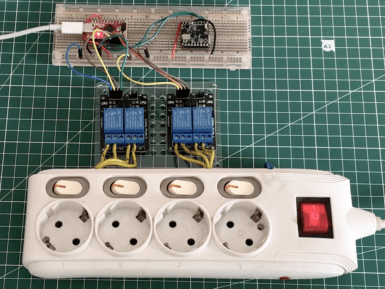
Overview
The RCWL-0516 is particularly suitable as an alternative to using a PIR motion sensor.
When it detects a moving object, the output changes from a low logic level to a high level (3.3 volts). Appropriately interfaced (Arduino, Fishino or other), it can be used for the automatic opening of electric doors and gates, automatic lighting.
Detection range is about 9 meters.
Tech specs
- Power supply: from 4 volts to 28 volts
- Consumption: typical 2.8 mA; max. 3 mA
- Detection distance: from 5 to 9 meters
- Transmission power: typical 20 mW; max. 30 mW
- Output voltage and current: 3.2-3.4 volts - 100 mA
- Operating temperature: from -20°C to +80°C
- Pin definition: 3V3: 3.3 volt output voltage
- GND: negative power supply
- OUT: when it detects a moving object, it changes from a low level to a high level (3.3 volts)
- VIN: positive power supply from 4 volts to 28 volts
- CDS: if kept low, less than 0.7 volts, the output will always be low even in the presence of motion
Conformities
Get Inspired

As Jallson Suryo discusses in his project, adding voice controls to our appliances typically involves an internet connection and a smart assistant device such as Amazon Alexa or Google Assistant. This means extra latency, security concerns, and increased expenses due to the additional hardware and bandwidth requirements. This is why he created a prototype based on an Arduino Nicla Voice that can provide power for up to four outlets using just a voice command. Suryo gathered a dataset by repeating the words “one," “two," “three," “four," “on," and “off” into his phone and then uploaded the recordings to an Edge Impulse project. From here, he split the files into individual words before rebalancing his dataset to ensure each label was equally represented. The classifier model was trained for keyword spotting and used Syntiant NDP120-optimal settings for voice to yield an accuracy of around 80%. Apart from the Nicla Voice, Suryo incorporated a Pro Micro board to handle switching the bank of relays on or off. When the Nicla Voice detects the relay number, such as “one” or “three," it then waits until the follow-up “on” or “off” keyword is detected. With both the number and state now known, it sends an I2C transmission to the accompanying Pro Micro which decodes the command and switches the correct relay. To see more about this voice-controlled power strip, be sure to check out Suryo’s Edge Impulse tutorial.







